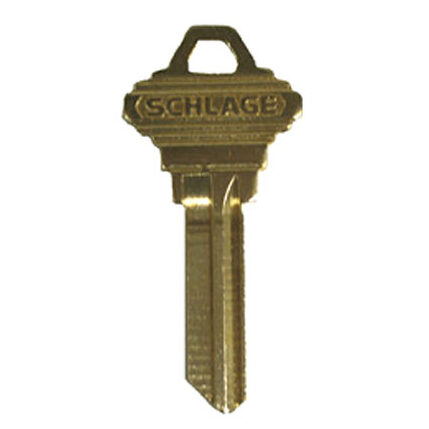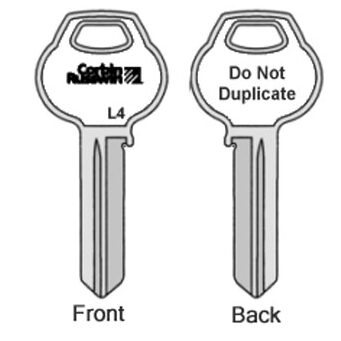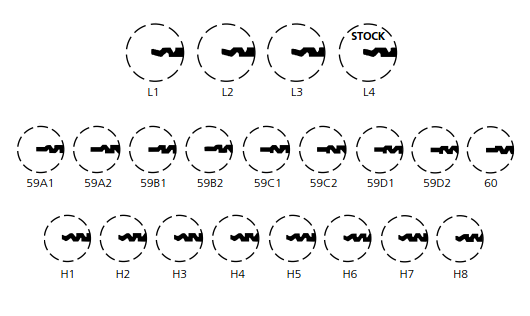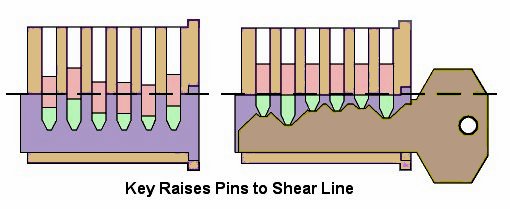For such simple items, keys can get tricky sometimes.

The top of the key is called the bow, sometimes referred to as the head. Each manufacturer has their own unique bow style.
It is common to find other markings on the bow such as the keyway number or any special instructions.
The lower portion is called the blade, also known as the shaft. Grooves are cut into the blade at the factory to give it a unique shaped called a Keyway.

Keyway
The most important aspect of a key is its keyway, or shape when viewed from the edge. This zig zag shape is unique and distinguishes it from all other keyways in the world. Below is a sampling of some keyways from Corbin Russwin grouped by family.

For example, the ”H” group of keyways all carry common features just like parents and their children. These shared features allow locksmiths to create master key systems with different levels of access within a building.
Some keyways within the ”H” series are strictly for lower level access such as one single door, while others designed for higher levels such as mangers with access to many doors. These slight differences within a keyway family is what allows for great flexibility when designing a key system.
Keyed Cylinder
The peaks and valleys cut into a key blade of different heights. It turns out those heights correspond exactly with the length of each bottom pin housed within the cylinder (bottom pins are shown in light green). The first pin might be a #6 height, the second pin a #8 height, and so on. The idea is to make the tops of the green pins all line up horizontally once the key is inserted. This point of horizontal alignment is called the shear line.

Once all the pins align ”in shear” the key is allowed to turn. Remove the key again and the pins all drop back to the bottom of their shafts. It can no longer turn because the shear line is blocked by the top pins, as shown in the diagram.
Residential cylinders only have 5 shafts for pins but commercial applications have 6 as shown above. These are known as either 5-pin or 6-pin cylinders.